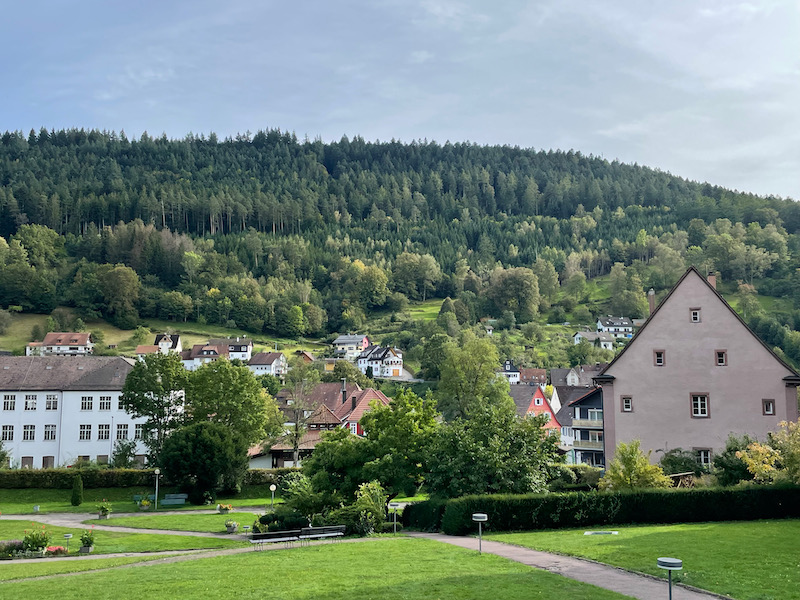Our Blog - Germany 2023 - Alpirsbach, Germany
A fairly quick stop in Alpirsbach, a market town that developed around the Alpirsbach Abbey, a Benedictine monastery that was founded in 1095. There is also a local brewery, Alpirsbacher Klosterbräu, where we stopped to pick up 6 different types of beer for my brother, who is a beer connoisseur.
The "Turm der Leutkirche" or the Leutkirche Tower was the tower of a stone church consecrated in 1099, which probably served as the first monastery church. After the construction of the larger church, it was relegated to being a parish church until 1649, when the choir and nave were demolished.
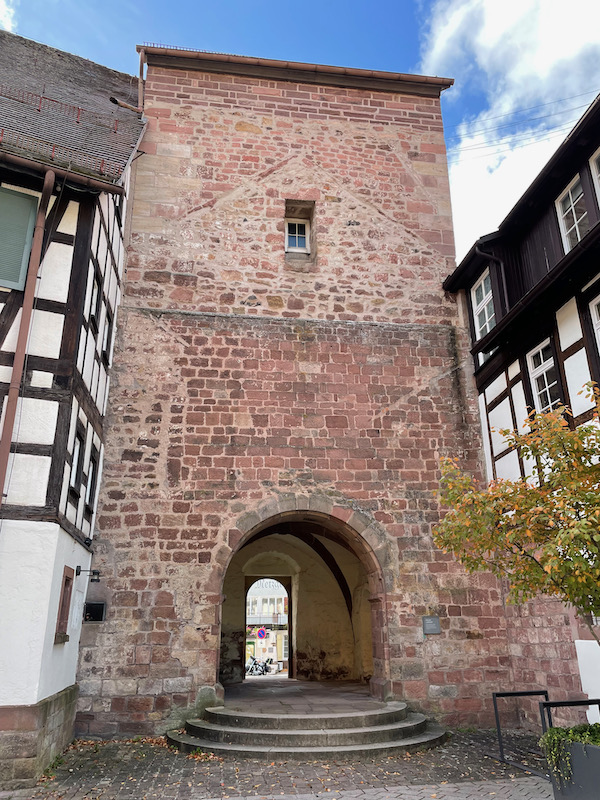
There is a nice museum along with the abbey church, and there was a good model that shows the church (lower-left) along with all of the abbey buildings around the central courtyard.
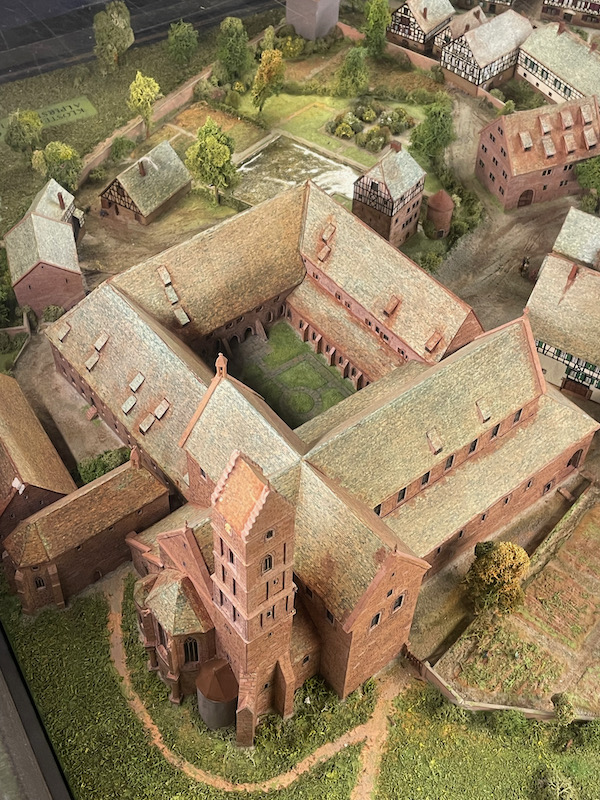
Alpirsbach Abbey was one of a series of monasteries founded in SW Germany in the late 11th century. In 1095, the monastery was established and the first abbot and 11 convent brothers came from a nearby abbey, St. Blasien. The Romanesque church is thought to have been built between 1125 and 1133, along with the construction of the other abbey buildings in stone (in place of the older wooden buildings).
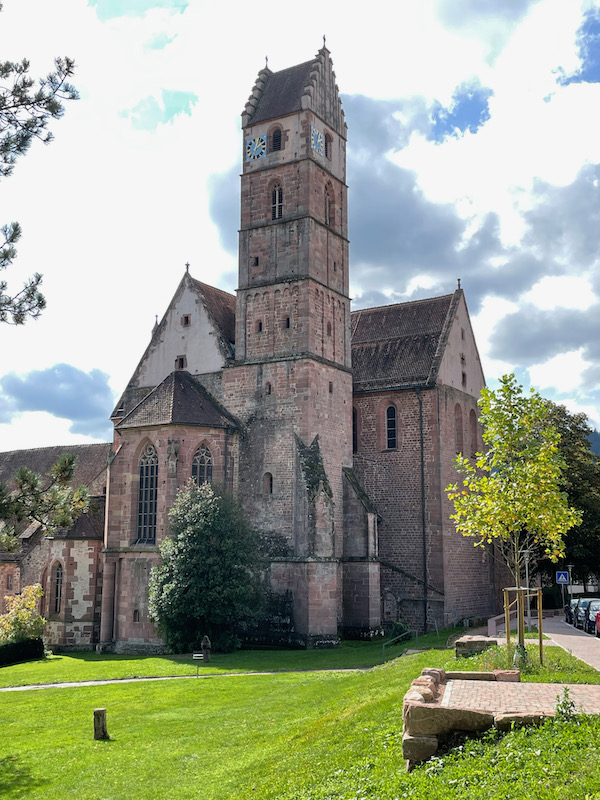
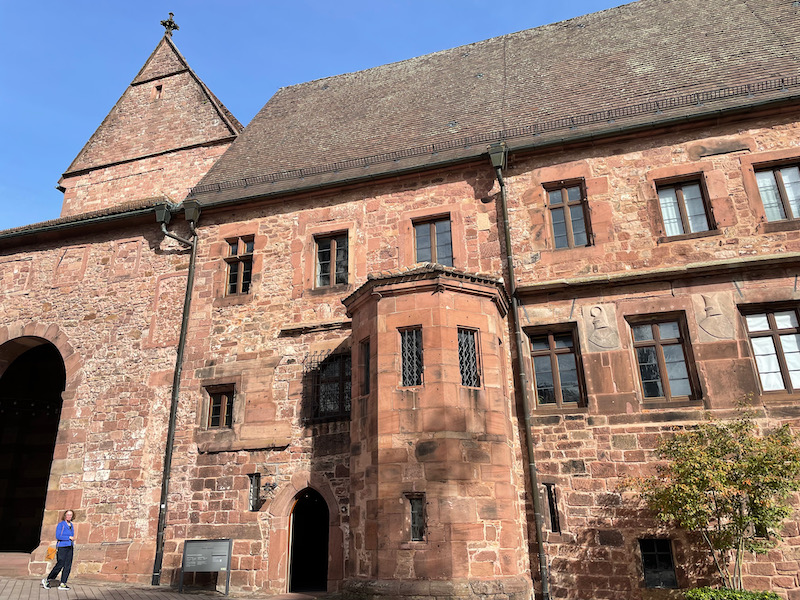
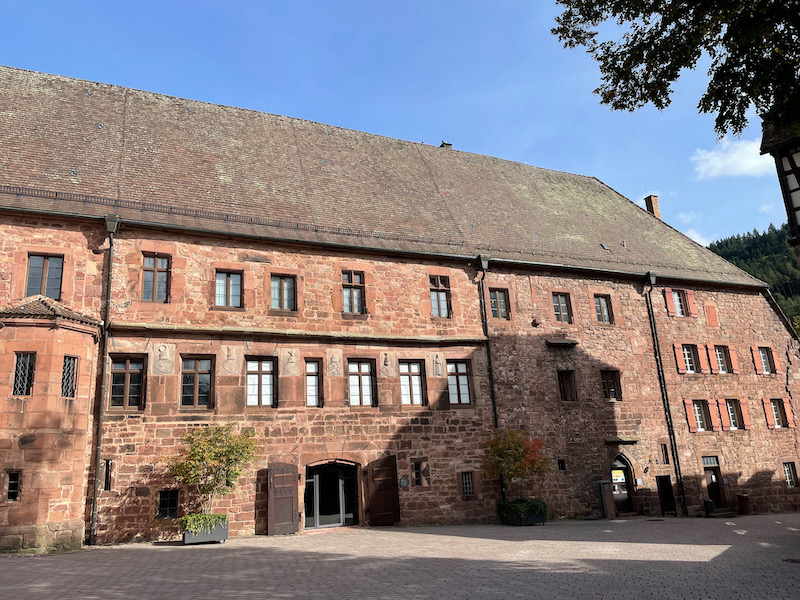
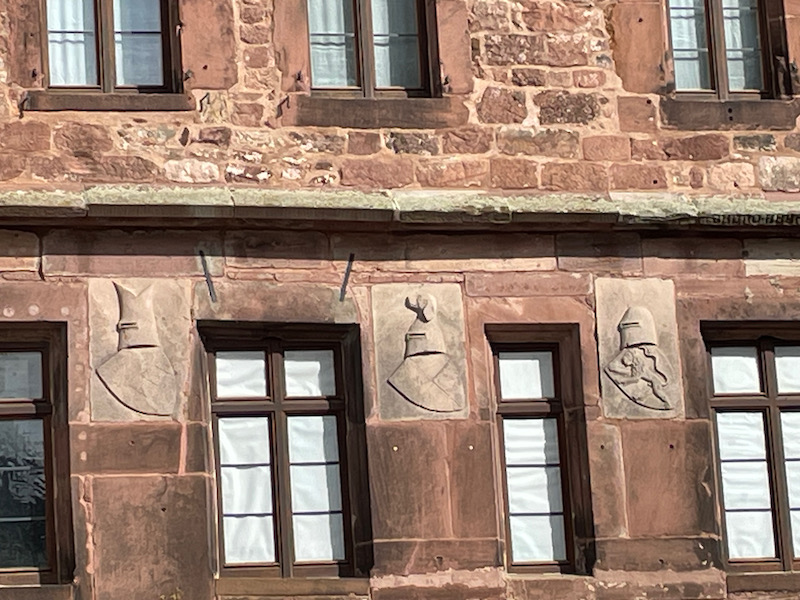
While Tom was praying in this little chapel alcove, he found some frescoes on the wall.
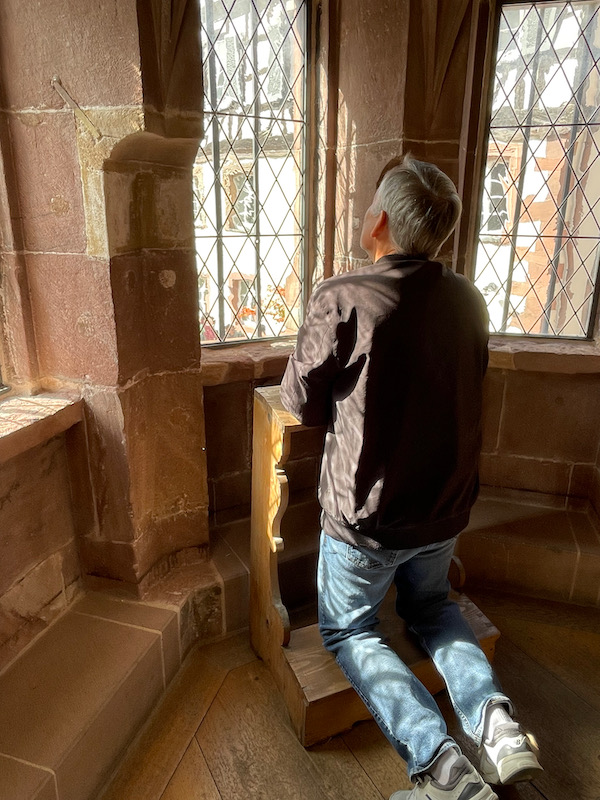
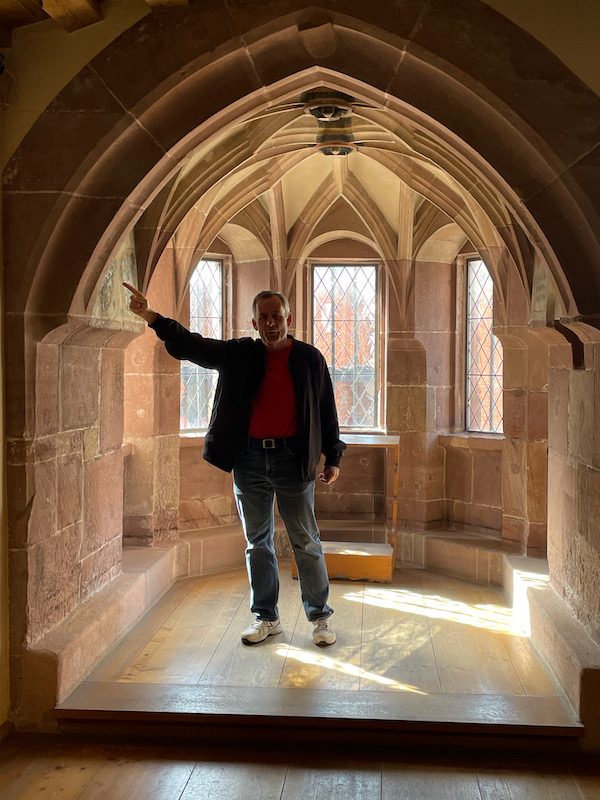
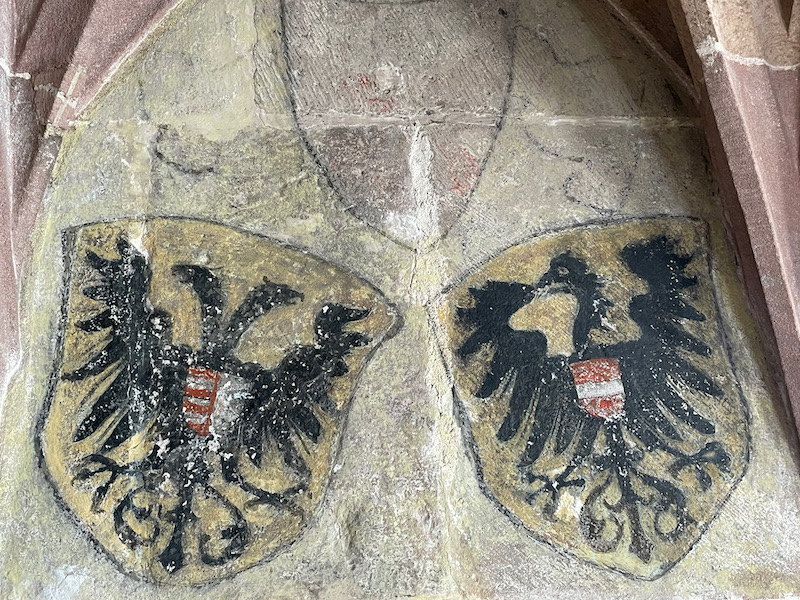
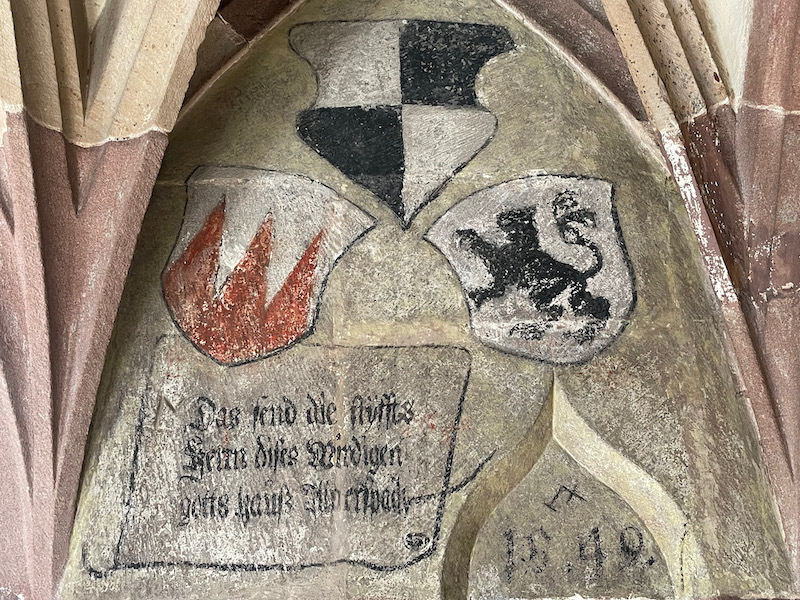
Here we see one of the galleries around the courtyard, with extensive ribbed vaults and keystones.
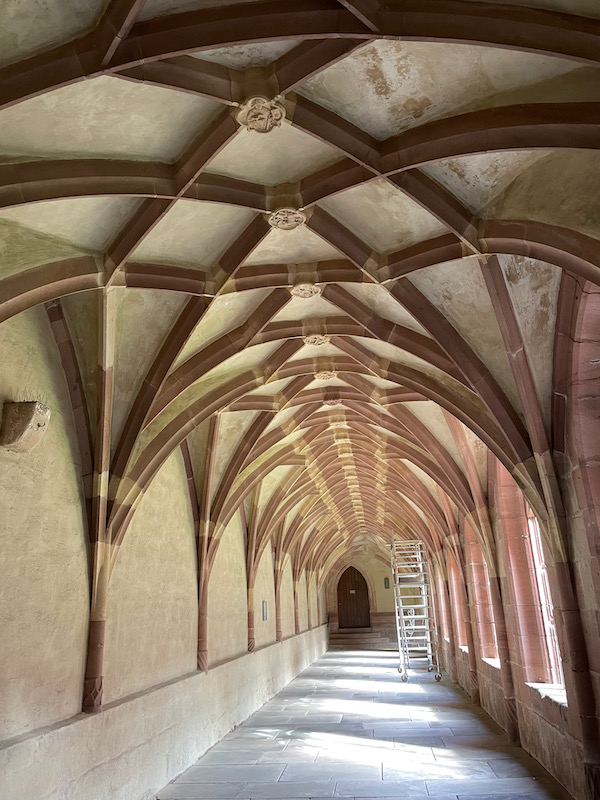
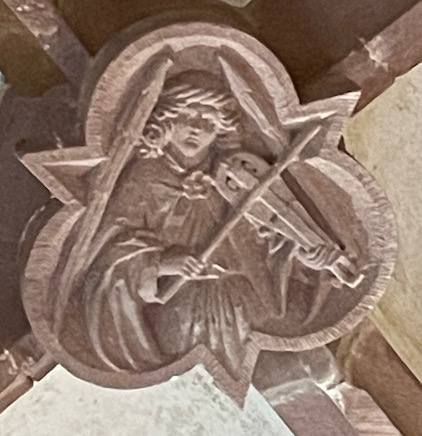
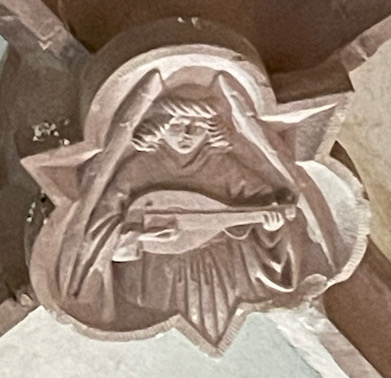
And then a view around the courtyard to the various buildings, which include the church and dormitories.
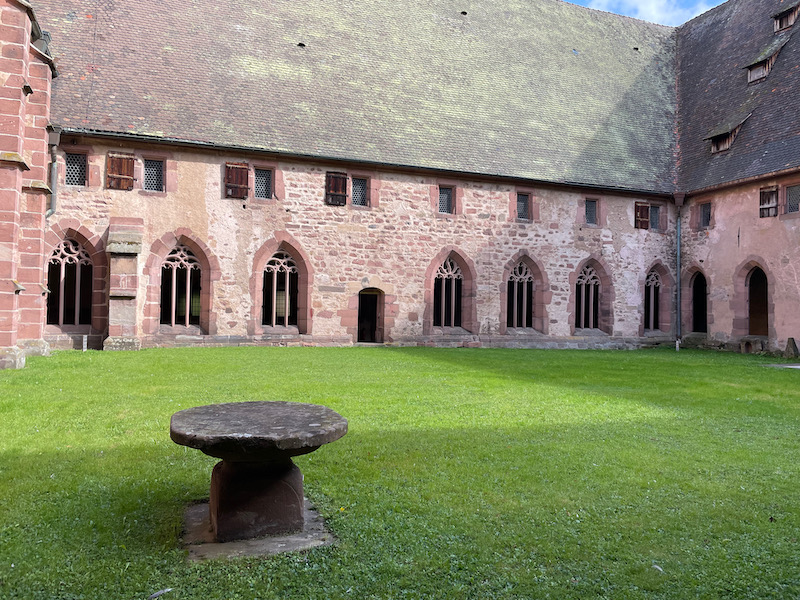
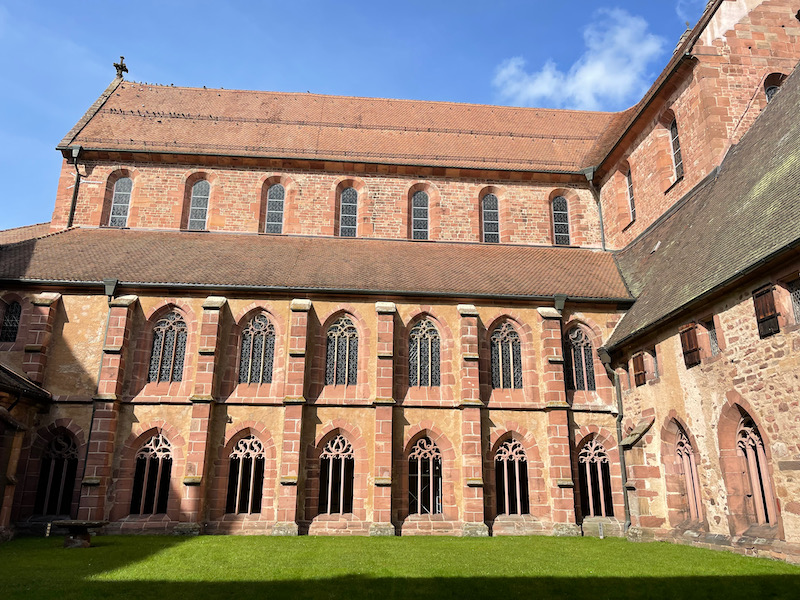
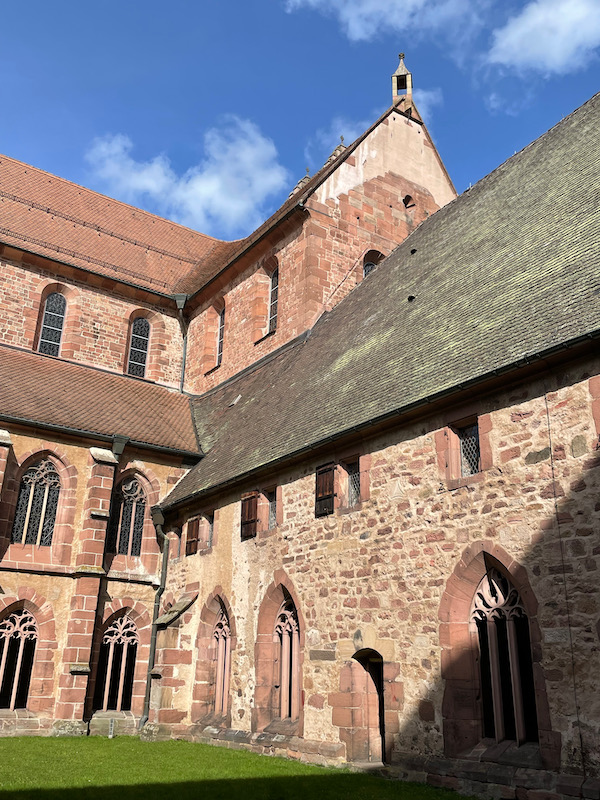
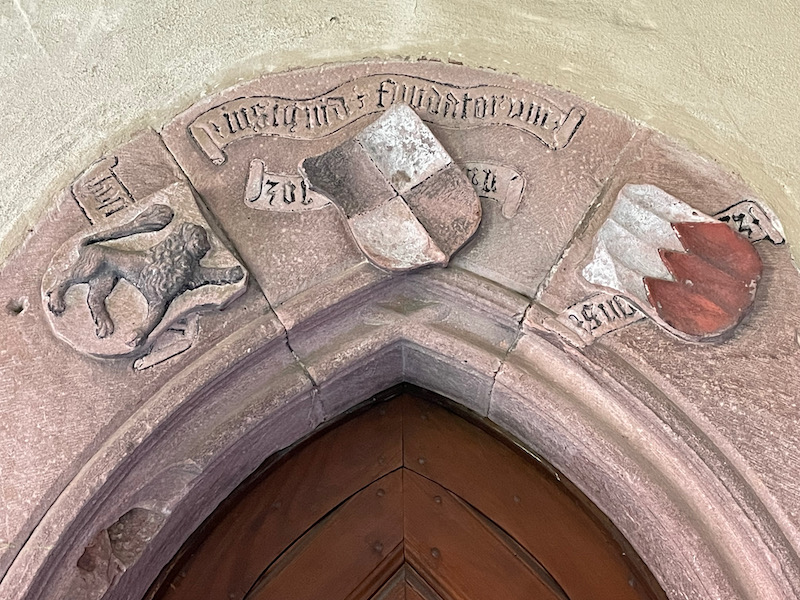
The nave and side aisles are separated by large Romanesque arches with an intricate design above. You can also see the flat wooden ceiling.
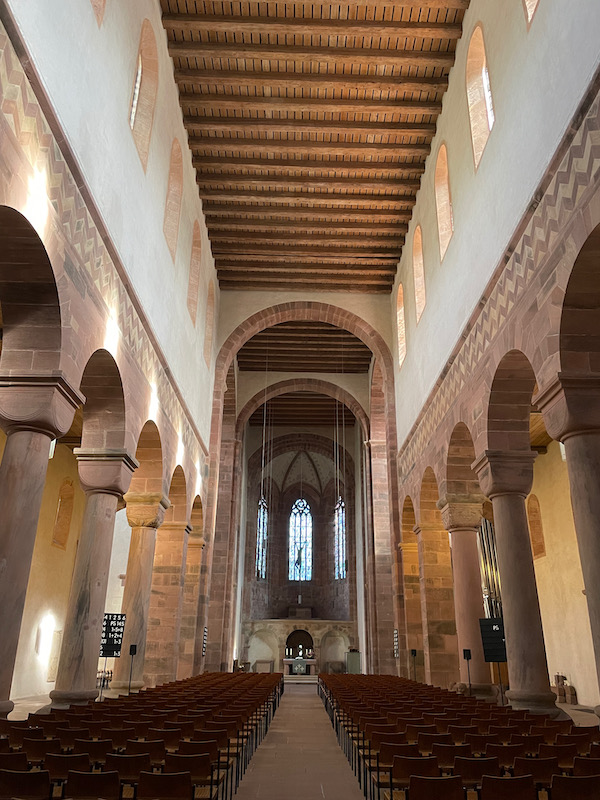
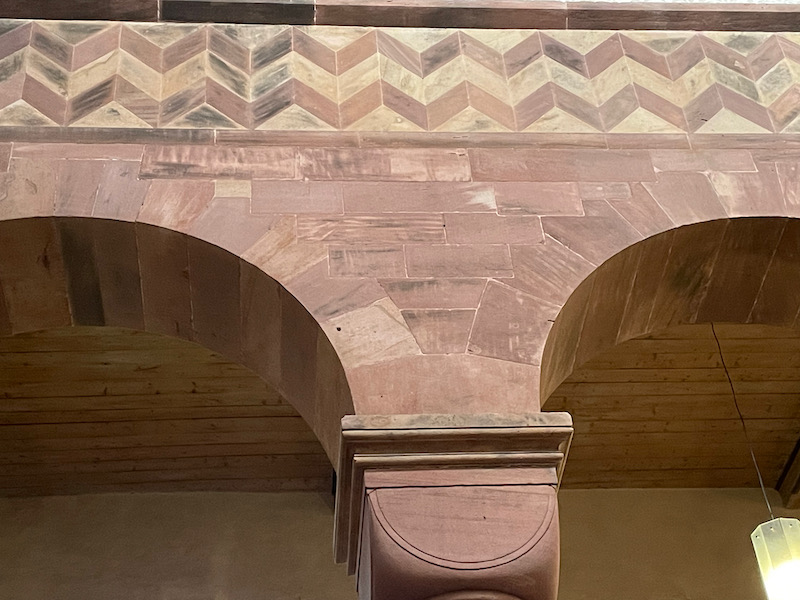
In the apse are 3 niches with altar pedestals. The middle niche is decorated with frescoes dating back to the 13th century. Christ on the cross, with Mary, John the Baptist, and 2 soldiers looking on (1st picture). Then in the ceiling, we have Christ in the middle with groups of people on both sides. This is supposed to show the Last Judgement, with the groups of people being the blessed and the condemned (although, they all seem to be smiling, so I'm not sure which is which).
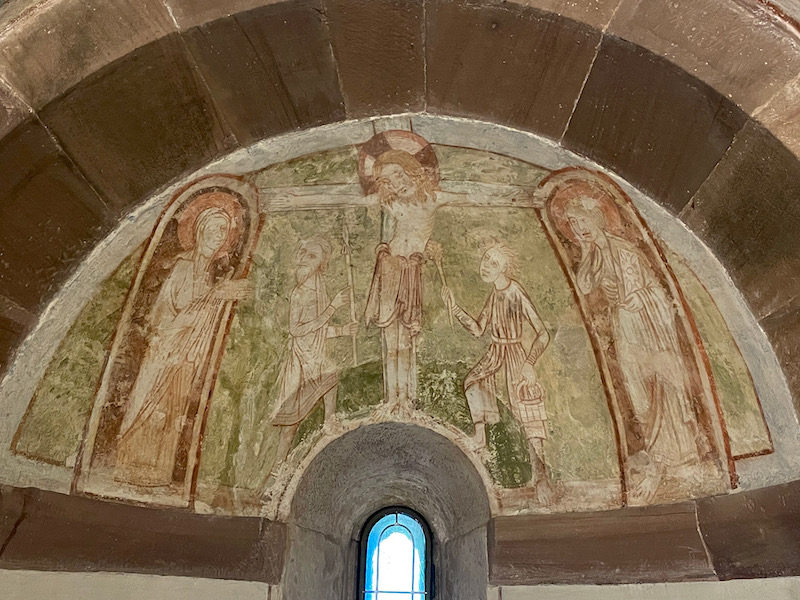
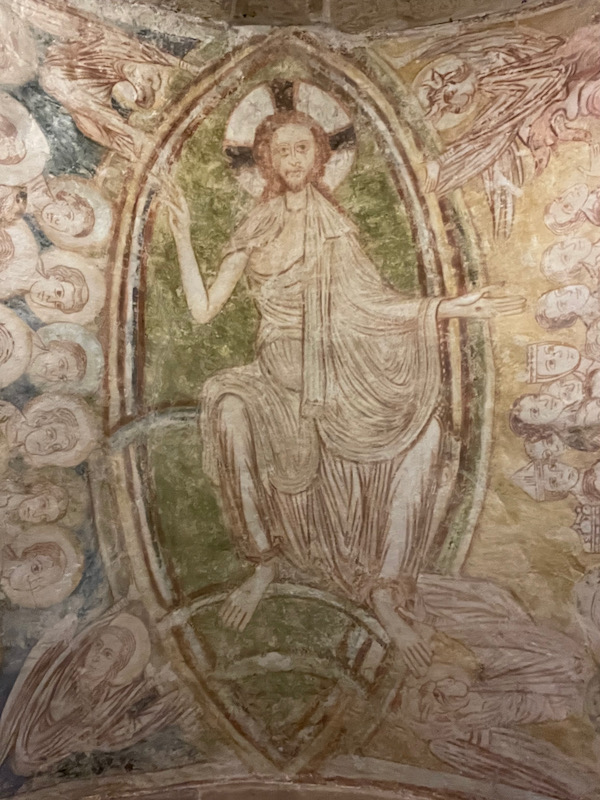
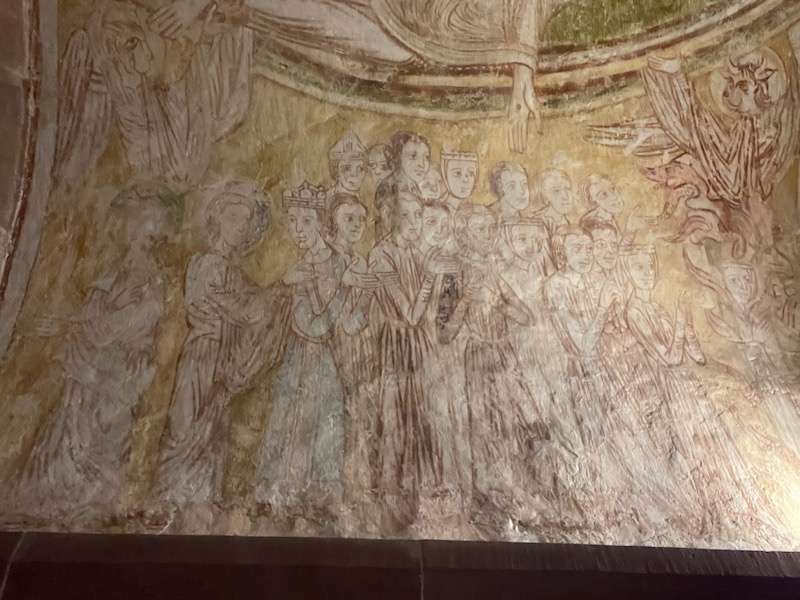
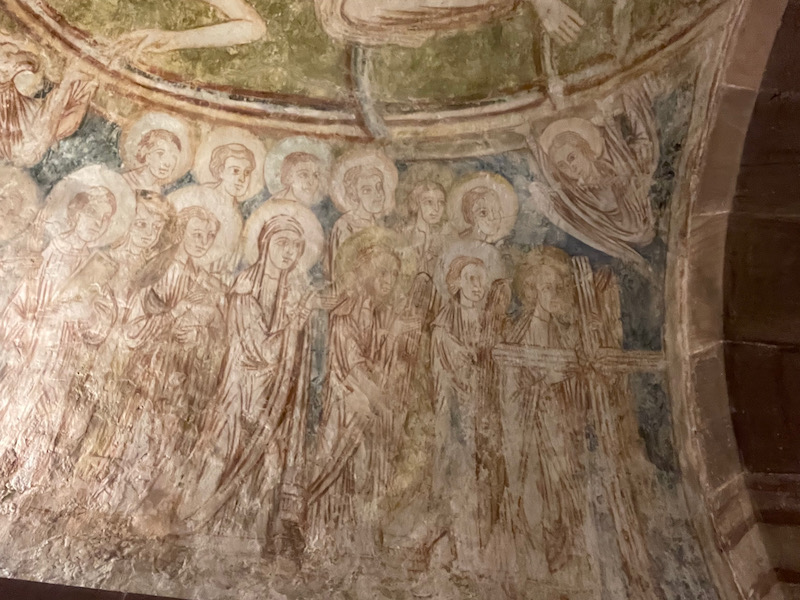
In the north transept has an altar to the Virgin Mary that was built in 1520 in a workshop nearby in the town of Ulm.
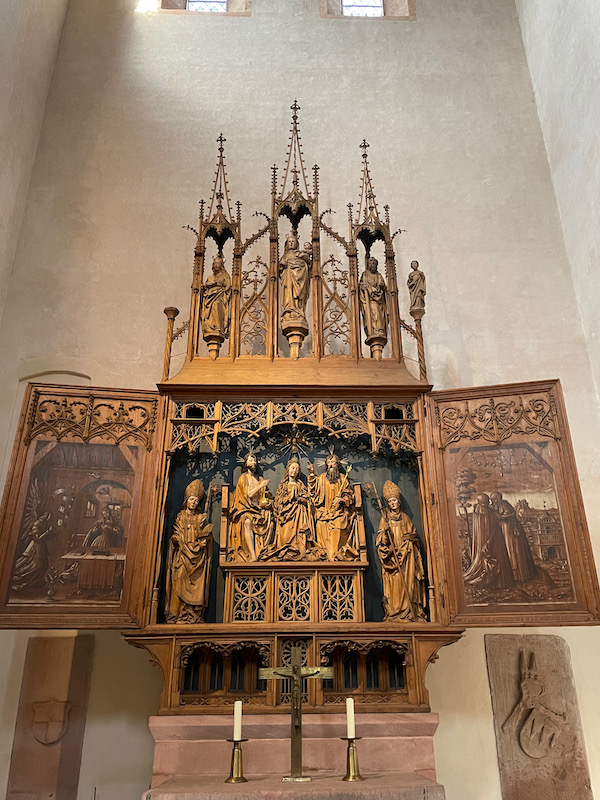
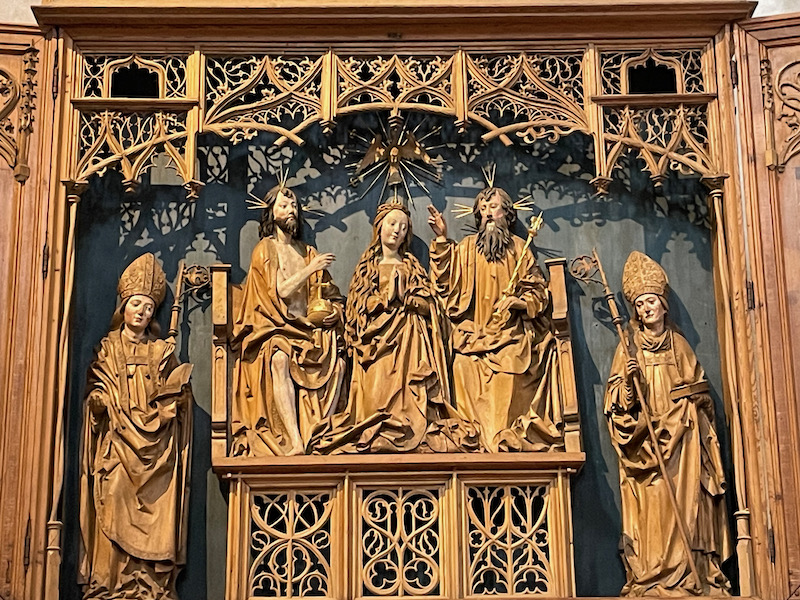
Some of the columns have sculptured figures referring to the difference between paradise and hell, with bearded heads tormented by dragons and demons around the base.
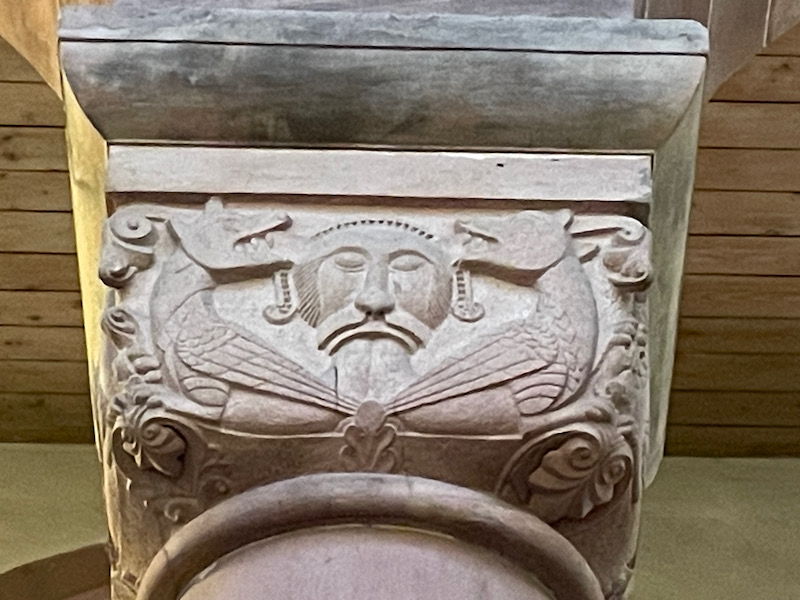
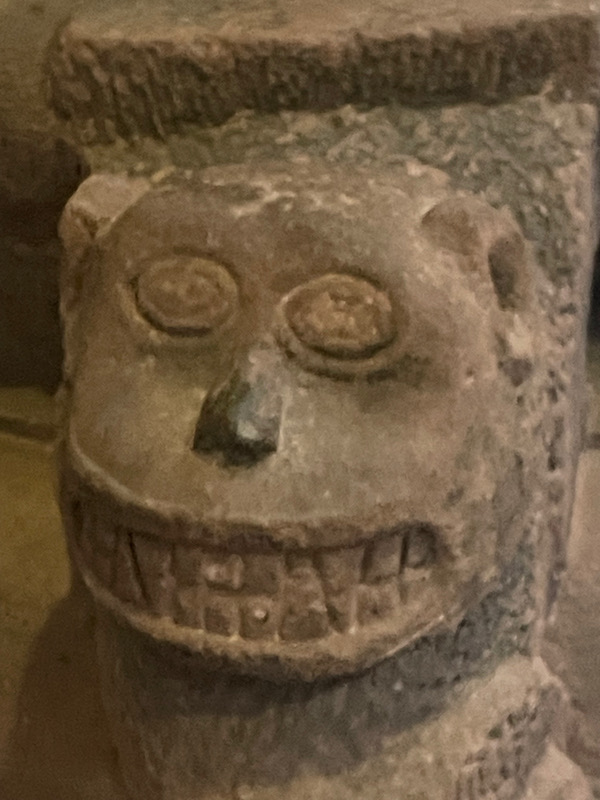
While almost all of the church is Romanesque, this little late Gothic-style chapel stands out. It was added in 1506 and is known as the Sulz chapel.
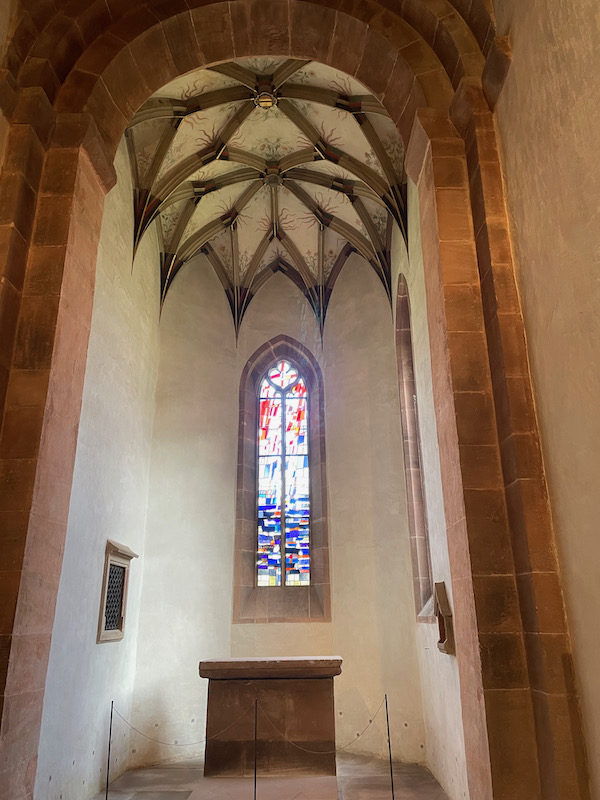
This bench dates back to around 1342.
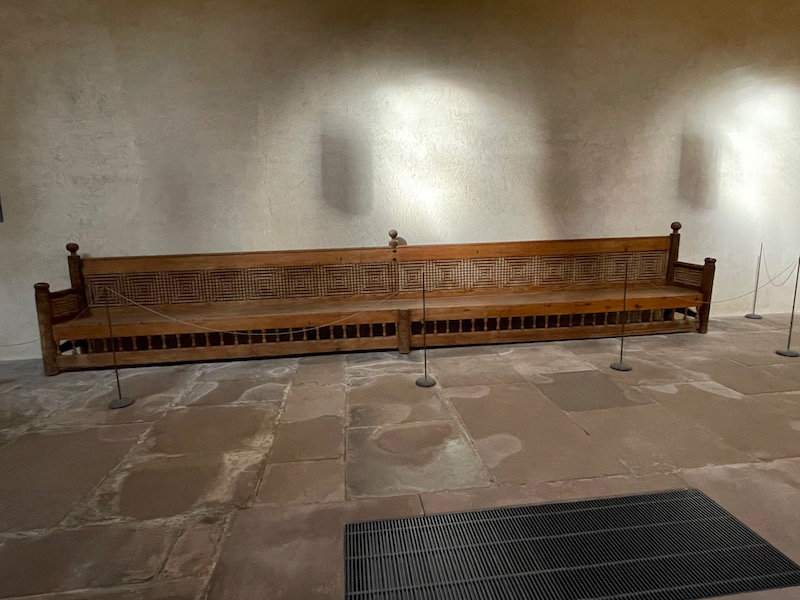
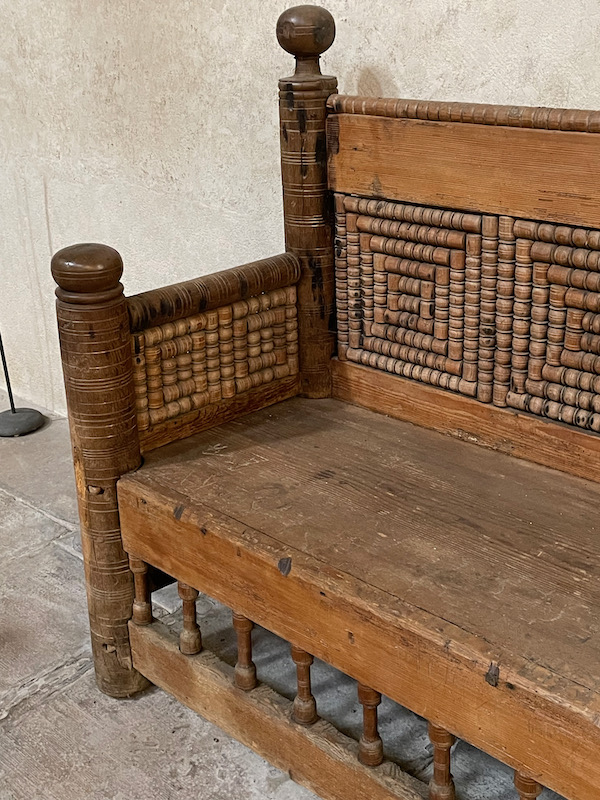
Just a few random building pictures to get a sense of the type of architecture in the town.
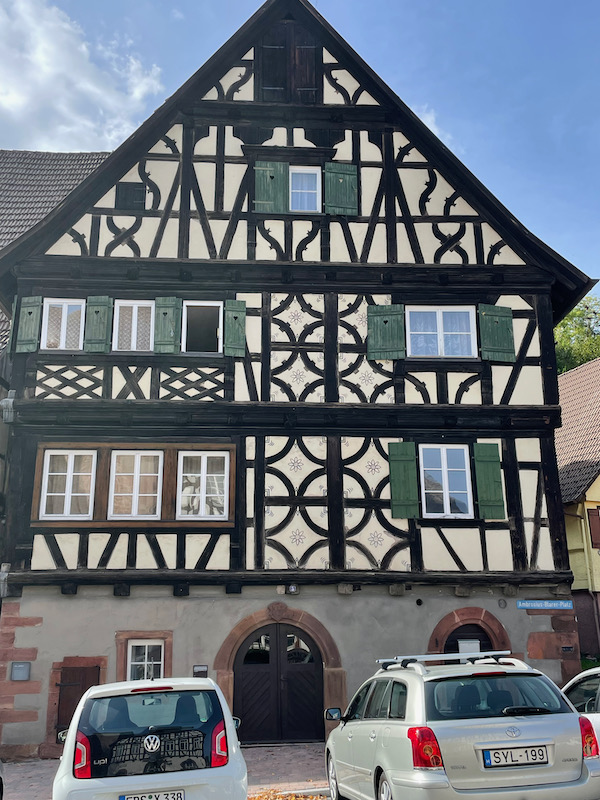
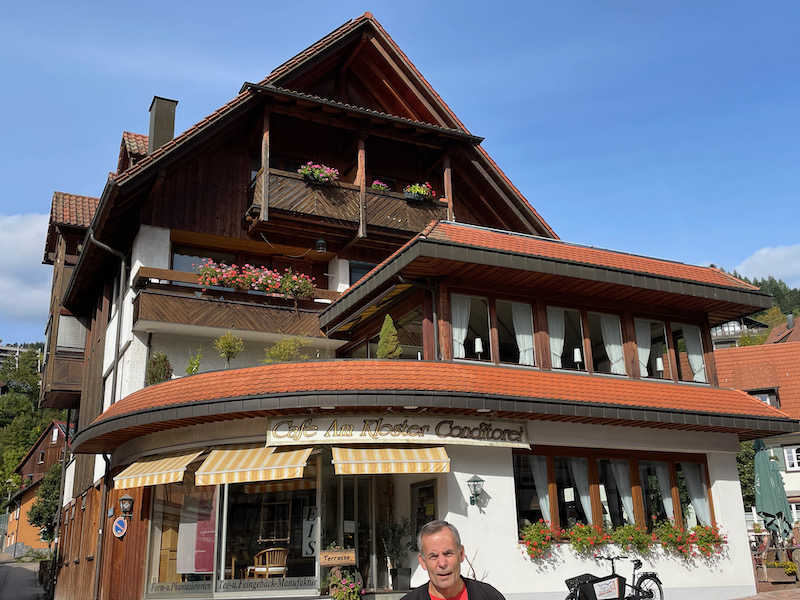
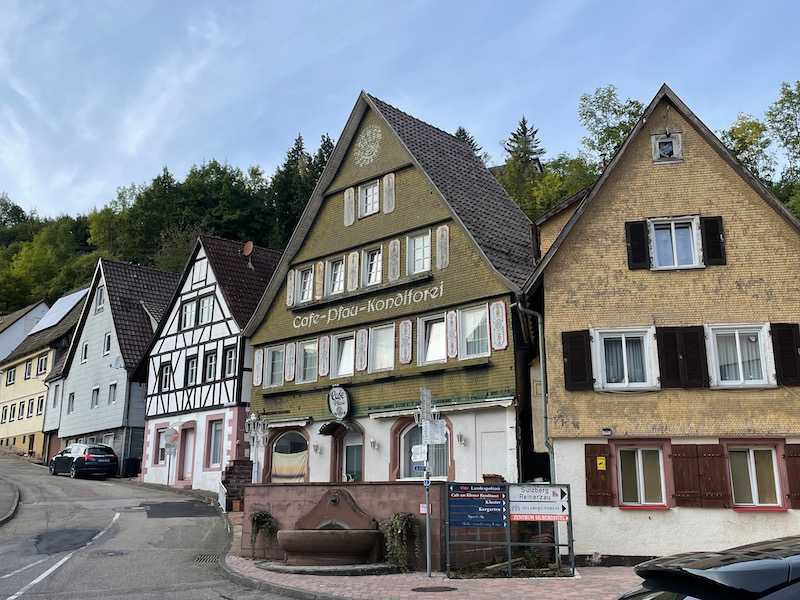
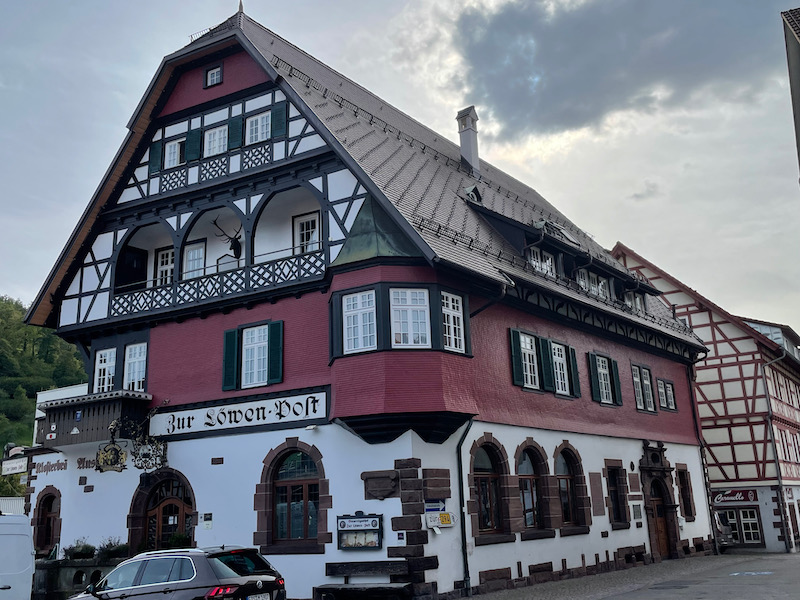
If you’ve never had Black Forest cake (Schwarzwälder Kirschtorte) you’re in for a treat. Made of layers of spongy chocolate cake, some tart cherries, cherry liquor, and whipped cream.
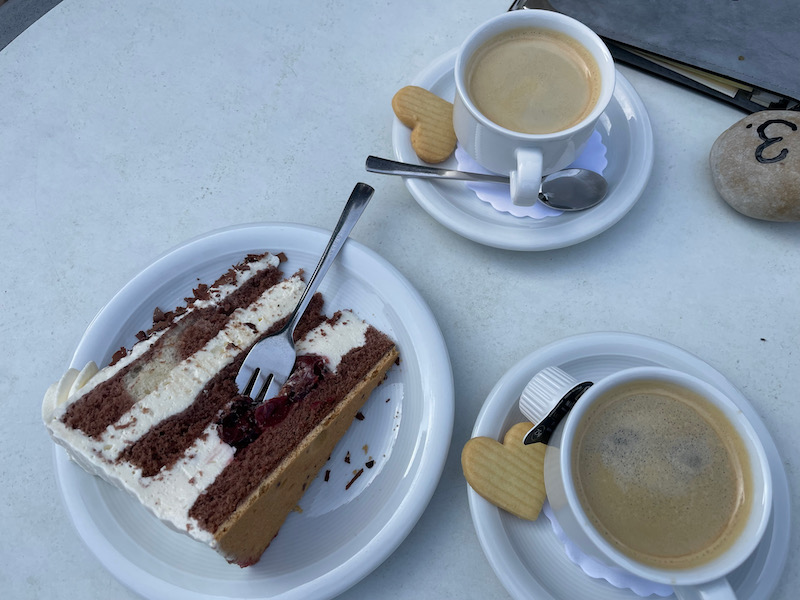
Similar to my previous blog in Triberg, there were several very nice wrought-iron business signs.
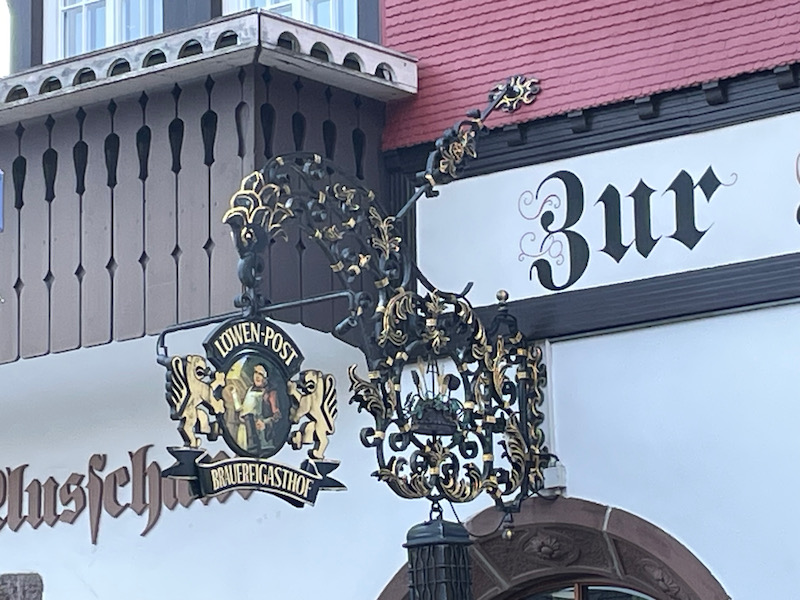
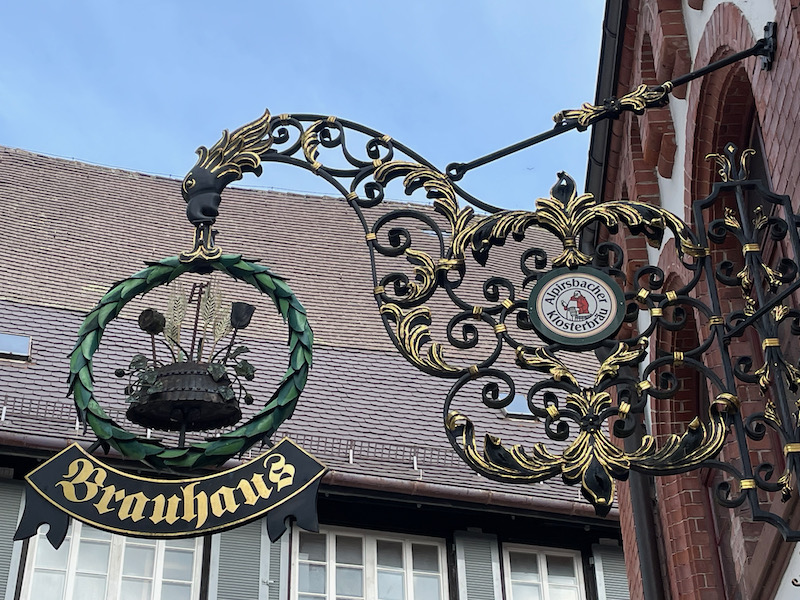
This is yet another town that sits in a valley, surrounded by large hills covered with pine trees.
